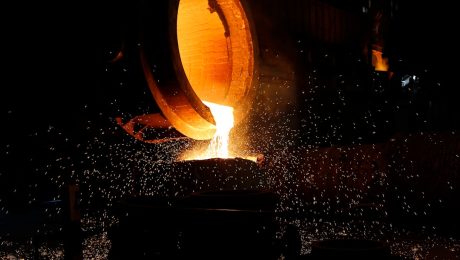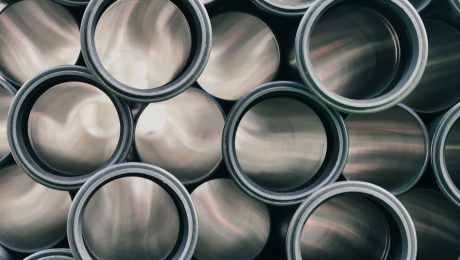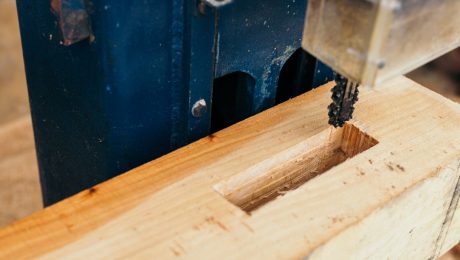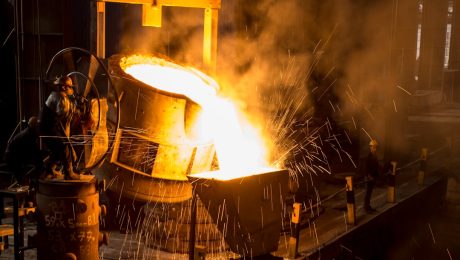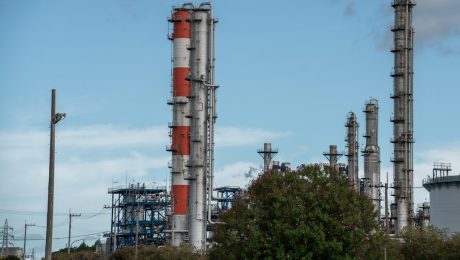Steel pipes are fundamental components in shipbuilding, forming the arteries of a vessel, carrying vital fluids, gases, and supporting critical structural elements. Their selection and implementation are crucial for the safety, efficiency, and longevity of any ship. This comprehensive guide explores the multifaceted world of steel pipes in shipbuilding, delving into their various types, applications, and the importance of quality control.
1. Types of Steel Pipes Used in Shipbuilding
The shipbuilding industry utilizes a range of steel pipes, each chosen based on specific application requirements. These include:
- Carbon Steel Pipes: The most common type, offering a good balance of strength, weldability, and cost-effectiveness. They are frequently used for general-purpose applications, such as fluid conveyance and structural support.
- Alloy Steel Pipes: Used in high-stress environments or where corrosion resistance is paramount. Alloy steels, containing elements like chromium, molybdenum, and nickel, offer enhanced strength, toughness, and resistance to high temperatures and corrosive substances. They’re often found in high-pressure systems and critical structural components.
- Stainless Steel Pipes: Essential where corrosion resistance is crucial, particularly in seawater environments. They are resistant to rust and degradation, making them ideal for piping systems handling seawater, chemicals, or waste. Different grades of stainless steel offer varying levels of corrosion resistance and strength.
- Welded Pipes: Manufactured by welding a steel strip into a cylindrical shape. Cost-effective for larger diameter pipes, but require rigorous quality control to ensure weld integrity.
- Seamless Pipes: Produced from a single piece of steel, offering superior strength and resistance to internal pressure. Primarily used in high-pressure systems and critical applications where leak-free performance is essential.
2. Applications of Steel Pipes in Ship Construction
Steel pipes are ubiquitous throughout a vessel, serving a wide array of functions:
- Fluid Transfer Systems: Carrying fuel, water, lubricants, and other essential fluids throughout the ship. The choice of pipe material depends on the fluid’s properties and the operating pressures.
- Fire Protection Systems: Critical for safety, these systems use steel pipes to distribute water or fire-suppressing agents throughout the vessel.
- Hydraulic and Pneumatic Systems: Powering various shipboard systems, from steering mechanisms to cargo handling equipment. High-strength and corrosion-resistant pipes are crucial for these applications.
- Ballast Water Management Systems: Essential for maintaining ship stability, these systems require robust pipes capable of handling large volumes of water.
- Structural Support: Steel pipes are incorporated into the ship’s framework, providing structural support and reinforcement in various sections.
- Exhaust Systems: Carrying exhaust gases from engines to the atmosphere, requiring pipes capable of withstanding high temperatures and corrosion.
3. Steel Pipe Specifications and Standards in Shipbuilding
Adherence to stringent specifications and standards is paramount in shipbuilding. International standards like ISO, ASME, and national standards ensure the quality and reliability of steel pipes used in maritime construction. These specifications cover aspects such as:
- Material Grade: Defining the chemical composition and mechanical properties of the steel.
- Pipe Dimensions: Including outer diameter, wall thickness, and length.
- Manufacturing Processes: Specifying the manufacturing techniques used, such as seamless or welded.
- Testing and Inspection: Outlining the necessary tests to ensure quality and compliance, including pressure testing, ultrasonic testing, and visual inspection.
- Surface Finish: Defining the acceptable surface roughness and coatings to prevent corrosion.
4. Quality Control and Assurance for Steel Pipes in Shipbuilding
Maintaining the highest quality standards is non-negotiable in shipbuilding. Rigorous quality control measures are implemented throughout the entire process, from raw material selection to final installation. These include:
- Material Traceability: Ensuring the origin and properties of the steel used are fully documented.
- Non-Destructive Testing (NDT): Employing techniques like ultrasonic testing and radiographic testing to detect internal flaws without damaging the pipe.
- Hydrostatic Testing: Subjecting pipes to high internal pressure to verify their strength and integrity.
- Visual Inspection: Carefully examining pipes for surface imperfections, such as cracks, dents, or corrosion.
- Third-Party Inspection: Independent verification by qualified inspectors to ensure compliance with standards and specifications.
5. Future Trends in Steel Pipes for Shipbuilding
The shipbuilding industry is constantly evolving, and so too are the demands on steel pipes. Future trends include:
- Advanced Materials: Research into high-strength, lightweight steels and innovative alloys to improve fuel efficiency and reduce environmental impact.
- Improved Corrosion Resistance: Development of new coatings and surface treatments to enhance the lifespan of steel pipes in harsh marine environments.
- Digitalization and Automation: Utilizing advanced technologies for improved quality control, predictive maintenance, and optimized pipe selection and installation.
- Sustainable Practices: Increasing focus on using recycled steel and implementing environmentally friendly manufacturing processes.
- Lightweighting Solutions: Exploring innovative designs and materials to reduce the overall weight of the piping systems, leading to improved fuel efficiency and reduced emissions.
In conclusion, steel pipes are critical components in shipbuilding, impacting the safety, performance, and longevity of vessels. Understanding the various types, applications, and quality control measures is crucial for ensuring the successful construction and operation of ships.
Tags: Steel pipes, shipbuilding, marine construction, steel pipe standards, corrosion resistance, maritime industry
The steel industry, a cornerstone of global infrastructure, has historically been a significant contributor to greenhouse gas emissions. However, a revolution is underway, driven by the urgent need for sustainable practices. This post explores the innovative approaches transforming steel manufacturing into a greener, more environmentally responsible industry.
1. The Environmental Impact of Traditional Steelmaking
Traditional steel production, primarily using the blast furnace-basic oxygen furnace (BF-BOF) route, is an energy-intensive process reliant on coking coal. This process releases substantial amounts of carbon dioxide (CO2), a major greenhouse gas contributing to climate change. Beyond CO2, traditional steelmaking also generates other pollutants, including particulate matter, sulfur oxides, and nitrogen oxides, impacting air and water quality. The extraction of iron ore itself can also cause significant environmental damage through deforestation, habitat loss, and soil erosion. The sheer scale of global steel production means these impacts are substantial and demand immediate action.
2. Recycling: A Cornerstone of Eco-Friendly Steel Production
Steel is remarkably recyclable, a crucial aspect of reducing its environmental footprint. Recycling steel requires significantly less energy than producing it from raw materials, reducing CO2 emissions by up to 75%. Scrap steel can be easily melted down and reused in the production process, creating a closed-loop system that minimizes waste and resource depletion. The increased use of electric arc furnaces (EAFs), which primarily use scrap steel as feedstock, is a significant step towards greener steelmaking. However, improving the collection and sorting of scrap steel is crucial to maximize the efficiency and effectiveness of recycling initiatives. Investing in advanced sorting technologies and promoting responsible scrap metal management are key components of a circular economy for steel.
3. Hydrogen-Based Steelmaking: A Promising Pathway to Carbon Neutrality
Hydrogen-based steelmaking is emerging as a transformative technology with the potential to revolutionize the industry’s environmental performance. Instead of using coking coal, this process utilizes hydrogen as a reducing agent in the steelmaking process. When hydrogen reacts with iron ore, it produces iron and water vapor, significantly reducing or eliminating CO2 emissions. While still in its early stages of development, several pilot projects are underway, exploring different hydrogen production methods, including electrolysis powered by renewable energy sources. The successful deployment of hydrogen-based steelmaking will depend on the availability of affordable, green hydrogen and the development of efficient and scalable technologies. This transition requires significant investment in research and development, as well as supportive government policies.
4. Carbon Capture, Utilization, and Storage (CCUS) Technologies
While hydrogen-based steelmaking offers a long-term solution, Carbon Capture, Utilization, and Storage (CCUS) technologies provide a more immediate approach to mitigating emissions from existing steel plants. CCUS involves capturing CO2 emissions from the steelmaking process, transporting it, and either storing it underground or utilizing it in other industrial processes. While CCUS is not a perfect solution, as it doesn’t eliminate emissions entirely, it can significantly reduce the industry’s carbon footprint in the short to medium term, allowing for a smoother transition to cleaner technologies. The effectiveness of CCUS depends on the efficiency of capture, the availability of suitable storage sites, and the development of viable CO2 utilization pathways. The high cost of implementation remains a significant challenge for widespread adoption.
5. The Future of Eco-Friendly Steel: Collaboration and Innovation
The transition to eco-friendly steelmaking requires a concerted effort from various stakeholders, including steel producers, researchers, policymakers, and consumers. Collaboration is crucial to accelerate the development and deployment of green technologies, improve recycling rates, and establish robust regulatory frameworks. Innovation is key, with ongoing research focused on improving the efficiency of existing technologies, developing new sustainable processes, and exploring alternative materials. The future of steel lies in a sustainable approach that balances economic viability with environmental responsibility. Consumers can also play a significant role by supporting companies committed to sustainable practices and demanding environmentally friendly products.
The journey towards eco-friendly steel manufacturing is challenging but essential. By embracing innovation, collaboration, and a commitment to sustainability, the steel industry can pave the way for a greener future, ensuring that this vital material continues to play its crucial role in building a sustainable world.
Tags: eco-friendly steel, green steel, sustainable steel, steel recycling, hydrogen steel
In the world of construction, manufacturing, and engineering, the safety and reliability of materials are paramount. Steel, a fundamental building block in countless applications, requires stringent quality control to ensure structural integrity and user safety. This is where CE certification comes in. This comprehensive guide delves into the world of CE-certified steel products, explaining their significance, the certification process, and why choosing certified steel is a critical decision.
What Does CE Certification Mean for Steel Products?
The CE marking (Conformité Européenne) is a mandatory conformity marking for products sold within the European Economic Area (EEA). It indicates that the product meets the essential requirements of relevant European Union (EU) health, safety, and environmental protection legislation. For steel products, this means the manufacturer has demonstrated compliance with harmonized European standards, ensuring the steel’s quality, consistency, and safety. This isn’t just a tick-box exercise; it’s a rigorous process ensuring the steel meets specific mechanical properties, chemical composition, and dimensional tolerances. The absence of CE marking on steel products intended for the EEA market suggests non-compliance with EU regulations, potentially posing significant risks.
The Rigorous Process of CE Certification for Steel
Achieving CE certification for steel products isn’t a simple task. It involves several crucial steps:
- Product Design and Specification: The manufacturer must design the steel product to meet all relevant European standards (EN standards). This includes defining the required mechanical properties (tensile strength, yield strength, elongation), chemical composition, and dimensional accuracy.
- Testing and Verification: Independent testing laboratories accredited by notified bodies conduct rigorous testing to verify that the steel meets the specified requirements. These tests assess mechanical properties, chemical composition, and other relevant parameters.
- Quality Management System (QMS): The manufacturer must implement and maintain a robust QMS, typically ISO 9001 compliant, to ensure consistent production and quality control throughout the manufacturing process. Regular audits verify the effectiveness of the QMS.
- Declaration of Conformity (DoC): Once testing and audits are successfully completed, the manufacturer issues a DoC, a formal declaration stating that the product conforms to the relevant EU directives and standards. This DoC is a crucial part of the certification process.
- CE Marking Application: Finally, the CE marking is affixed to the product, accompanied by the manufacturer’s identification number and other relevant information. This marking serves as a visual confirmation of compliance.
Benefits of Choosing CE-Certified Steel Products
Selecting CE-certified steel offers numerous advantages:
- Enhanced Safety: The most significant benefit is the assurance of safety. CE certification guarantees the steel meets stringent safety requirements, minimizing the risk of structural failure and ensuring the safety of those using the structures or products made from it.
- Improved Quality and Reliability: The certification process ensures consistent quality and reliability. Manufacturers must adhere to specific standards, guaranteeing the steel’s performance and longevity.
- Legal Compliance: Using CE-certified steel ensures compliance with EU regulations, avoiding potential legal issues and penalties.
- Increased Confidence: CE certification provides stakeholders with increased confidence in the quality and safety of the steel products. This is particularly important for large-scale projects where safety is paramount.
- Market Access: CE certification is essential for selling steel products within the EEA market. It facilitates access to a wider customer base and enhances market competitiveness.
Applications of CE-Certified Steel
CE-certified steel finds applications in a vast array of sectors:
- Construction: It is used extensively in building construction, from structural steel frames to reinforcing bars in concrete.
- Manufacturing: It forms the basis of countless manufactured products, including machinery, vehicles, and appliances.
- Infrastructure: It’s a crucial component of bridges, tunnels, and other infrastructure projects.
- Offshore and Maritime: It plays a vital role in the construction of offshore platforms and ships.
- Automotive: High-strength, CE-certified steel is increasingly used in the automotive industry to improve vehicle safety and fuel efficiency.
Identifying Genuine CE Certification
It’s crucial to be able to identify genuine CE markings. A fraudulent CE marking can compromise safety and legal compliance. Look for the following:
- Correct CE Marking: The CE marking should be clearly visible and correctly formatted. Poorly printed or altered markings should raise suspicion.
- Manufacturer’s Identification Number: The manufacturer’s identification number should be clearly stated alongside the CE marking. This allows traceability to the manufacturer and their declaration of conformity.
- Notified Body Number (if applicable): Some products require involvement from a notified body. If applicable, the notified body’s identification number should be present.
- Verification of the Manufacturer: Contact the manufacturer directly to verify the authenticity of the CE marking and the declaration of conformity.
- Documentation Review: Request relevant documentation, including the declaration of conformity, test reports, and quality management system certificates, to verify compliance.
Choosing CE-certified steel is not merely a matter of compliance; it’s an investment in safety, quality, and reliability. By understanding the significance of CE certification and the rigorous process involved, you can make informed decisions that prioritize safety and ensure the long-term success of your projects.
The integrity of pipe products is paramount across diverse industries, from oil and gas to water management and construction. A robust quality control system is not just a best practice; it’s a necessity to ensure safety, prevent costly failures, and maintain a strong reputation. This comprehensive guide delves into the critical aspects of pipe product quality control, outlining the processes and technologies that contribute to superior quality and minimized defects.
1. Raw Material Inspection: The Foundation of Quality
The journey to a high-quality pipe begins with the raw materials. Thorough inspection of incoming materials is crucial. This involves verifying the chemical composition of the steel, checking for impurities, and assessing its mechanical properties like tensile strength, yield strength, and elongation. Modern techniques like spectrometer analysis provide accurate and rapid chemical composition determination. Furthermore, visual inspection for surface defects, such as cracks, pitting, or laminations, is essential. Detailed documentation of these inspections, including test results and certificates of compliance, is vital for traceability and accountability throughout the manufacturing process. Any deviation from pre-defined specifications triggers rejection or further investigation, ensuring only suitable materials proceed to the next stage.
2. In-Process Quality Control: Monitoring Every Step
Maintaining consistent quality requires rigorous monitoring throughout the manufacturing process. This includes checks at every critical stage, from the initial forming of the pipe to the final heat treatment. During pipe forming, dimensions are checked using precision measuring instruments to ensure adherence to specified tolerances. Wall thickness, diameter, and straightness are meticulously verified. Non-destructive testing (NDT) methods like ultrasonic testing (UT) and radiographic testing (RT) are employed to detect internal flaws like cracks, inclusions, and porosity that might not be visible on the surface. Regular calibration of testing equipment and adherence to standardized procedures are essential to ensure the accuracy and reliability of these in-process checks. Data logging and analysis help identify trends and potential problems early, enabling timely corrective actions.
3. Heat Treatment and its Crucial Role in Quality Assurance
Heat treatment is a critical process that significantly influences the mechanical properties and overall quality of the pipe. This involves carefully controlled heating and cooling cycles to achieve the desired microstructure and enhance the pipe’s strength, toughness, and ductility. The specific heat treatment parameters depend on the pipe’s intended application and material grade. Quality control in heat treatment includes monitoring the furnace temperature, soak time, and cooling rate using sophisticated sensors and data acquisition systems. Post-heat treatment testing, including hardness testing and tensile testing, verifies that the desired properties have been achieved. Detailed records of heat treatment parameters and test results are meticulously maintained for traceability and compliance with industry standards.
4. Final Product Inspection and Testing: Ensuring Perfection
Before pipes are released for use, they undergo a comprehensive final inspection and testing regime. This includes dimensional checks using calibrated measuring instruments, visual inspection for surface flaws, and hydrostatic testing to assess the pipe’s pressure resistance. Hydrostatic testing involves filling the pipe with water under pressure to simulate real-world operating conditions. Any leakage or deformation indicates a defect. Other NDT methods, such as magnetic particle testing (MT) and liquid penetrant testing (PT), might be employed to detect surface and near-surface flaws. The results of all final inspections and tests are documented and compared against predefined acceptance criteria. Only pipes meeting these criteria are approved for shipment. This final stage is critical for guaranteeing the integrity and reliability of the finished product.
5. Quality Management System (QMS) Implementation and Certification: A Holistic Approach
A robust Quality Management System (QMS) is the backbone of any successful pipe product quality control program. A well-defined QMS encompasses all aspects of the manufacturing process, from raw material procurement to final product delivery. It includes documented procedures, standardized work instructions, and a system for tracking and addressing quality issues. Implementing a QMS based on internationally recognized standards like ISO 9001 demonstrates a commitment to quality and provides assurance to customers. Regular internal audits and management reviews ensure the effectiveness of the QMS and identify areas for improvement. Seeking independent third-party certification further enhances credibility and provides external validation of the company’s commitment to quality.
By implementing comprehensive quality control systems at every stage of the manufacturing process, pipe producers can significantly reduce defects, enhance product reliability, and ensure the safety and integrity of their products. This, in turn, leads to increased customer satisfaction, improved brand reputation, and a competitive advantage in the market.
Tags: pipe quality control, pipe manufacturing, quality assurance, non-destructive testing, ISO 9001
Construction nails are seemingly simple components, yet their quality and suitability significantly impact the longevity and structural integrity of any project. Choosing the right nail requires understanding various standards, material properties, and the specific application. This comprehensive guide delves into the world of construction nails, exploring the crucial aspects of standards and durability to help you make informed decisions.
Understanding Construction Nail Standards
Various organizations set standards for construction nails, ensuring consistency in size, shape, and performance. These standards often dictate the dimensions (length, diameter, shank type), material composition, and even the manufacturing process. Key organizations involved in establishing these standards include the American Society for Testing and Materials (ASTM) and the International Organization for Standardization (ISO). These standards often specify minimum tensile strength, shear strength, and hardness requirements, ensuring the nails meet specific performance criteria. For instance, ASTM F1667 covers common wire nails, outlining specifications for dimensions, material properties, and testing methods. Understanding these standards is crucial for ensuring the nails you select will perform as expected under the anticipated load and environmental conditions.
The Role of Nail Material in Durability
The material from which a nail is manufactured significantly influences its durability. Common materials include:
- Steel: The most prevalent material due to its strength, availability, and cost-effectiveness. Steel nails can be further categorized based on coatings (galvanized, bright, etc.), which enhance their resistance to corrosion and environmental degradation. Galvanized nails, coated with zinc, provide superior protection against rust in outdoor applications.
- Aluminum: Lighter than steel, aluminum nails are often preferred for applications where weight is a concern or corrosion resistance is paramount in specific environments. However, they possess lower tensile strength compared to steel.
- Stainless Steel: Offers excellent corrosion resistance, making them ideal for marine environments or applications requiring long-term durability in harsh conditions. They are significantly more expensive than standard steel nails.
- Copper: Primarily used in specialized applications where its antimicrobial properties are advantageous, such as in decking or situations where corrosion resistance is critical.
The choice of material directly impacts the nail’s lifespan and performance, making it a critical factor in selecting the appropriate nail for a given project.
Nail Size and Shape: Impact on Holding Power
The size and shape of a nail are crucial factors affecting its holding power and suitability for different materials. Length is determined by the thickness of the material being fastened, with longer nails providing better holding power in thicker materials. Diameter, or gauge, affects the nail’s strength and resistance to bending. Thicker nails offer greater strength but may require more force to drive. The shank type (smooth, annular, spiral) also impacts holding power. Annular and spiral shank nails have increased surface area, improving their grip and reducing the likelihood of withdrawal. The point type (blunt, brad, diamond) influences ease of driving and the suitability for specific materials. A blunt point is ideal for hardwoods, while a sharp point is better for softer woods.
Coating and Finishes: Enhancing Nail Durability
Various coatings and finishes enhance nail durability and resistance to corrosion. Common coatings include:
- Galvanizing: A zinc coating that protects steel nails from rust. The thickness of the zinc coating determines the level of corrosion protection.
- Electroplating: Applying a thin layer of metal (e.g., copper, nickel, chrome) for enhanced corrosion resistance and aesthetics.
- Painting: Applying paint for aesthetic purposes and some level of corrosion protection, though it’s less effective than galvanizing or electroplating.
- Powder Coating: Provides a durable, protective layer that resists scratches and abrasion, improving longevity.
The choice of coating should be based on the expected environmental conditions and the desired lifespan of the construction.
Applications and Choosing the Right Nail
Different nails are designed for specific applications. For instance:
- Framing nails: Larger, heavier gauge nails used for framing structures, requiring high tensile strength.
- Finishing nails: Smaller nails with a finer head, used for finishing work where aesthetics are important.
- Roofing nails: Designed for fastening roofing materials, often with a larger head and ringed shank for enhanced holding power.
- Common nails: General-purpose nails used for a variety of applications.
- Box nails: Used for assembling boxes and crates, often with a slightly thinner shank.
It is critical to select the appropriate nail for each application to ensure structural integrity and durability. Failing to do so can lead to premature failure and potential safety hazards.
Understanding the standards, material properties, and applications of construction nails is vital for any construction project. By carefully considering the factors discussed above, you can ensure that your project uses the right nails for the job, leading to a stronger, more durable, and longer-lasting structure.
Tags: construction nails, nail standards, nail durability, nail types, construction materials
Wind turbines, the silent giants of renewable energy, rely on a complex interplay of components to harness the power of the wind. While the blades themselves are visually striking, their effectiveness hinges critically on a robust and reliable support system. This system, often overlooked, is the backbone of the turbine, ensuring efficient energy conversion and longevity. This post delves into the fascinating world of wind turbine blade support systems, exploring their design, materials, maintenance, and future innovations.
1. The Foundation: Pitch Bearing Systems and Their Crucial Role
The pitch bearing system is arguably the most critical component within the blade support structure. It allows for the controlled adjustment of the blade’s angle (pitch) relative to the wind. This adjustment is crucial for optimizing energy capture and protecting the turbine during high-wind events. The pitch bearing system typically consists of a sophisticated mechanism incorporating hydraulics or electromechanical actuators. These actuators precisely control the pitch angle, enabling the turbine to maximize energy production in moderate winds and feather the blades (turning them edge-on to the wind) during storms to prevent damage. The design and material selection for these bearings are paramount, as they must withstand immense forces and stresses, while maintaining precision and reliability over many years of operation.
2. Material Science: A Deep Dive into Blade Support Materials
The materials used in blade support systems must possess a unique combination of properties. High tensile strength is essential to withstand the immense centrifugal forces generated by the rotating blades, especially at high rotational speeds. Fatigue resistance is equally important, as the system experiences cyclical loading and unloading throughout its operational life. Common materials used include high-strength steel alloys, composites like carbon fiber reinforced polymers (CFRP), and advanced ceramics. The choice of material often depends on factors such as turbine size, operating conditions (e.g., wind speed, temperature), and cost considerations. Recent advancements in material science have led to the development of lighter and stronger materials, improving turbine efficiency and reducing the overall cost of energy.
3. Structural Integrity: Ensuring Safety and Longevity Through Design
The design of the blade support system is a complex engineering challenge, requiring meticulous consideration of factors such as aerodynamics, structural mechanics, and fatigue analysis. Finite element analysis (FEA) plays a crucial role in simulating the stresses and strains experienced by the system under various operating conditions. This allows engineers to optimize the design for maximum strength and minimize the risk of failure. Furthermore, the design must account for factors such as corrosion, icing, and extreme temperature variations, ensuring the system’s long-term reliability and safety. Redundancy is often built into the design, providing backup systems in case of component failure.
4. Maintenance and Inspection: Prolonging the Life of Blade Support Systems
Regular maintenance and inspection are crucial for ensuring the continued safe and efficient operation of wind turbine blade support systems. This includes visual inspections for signs of wear, corrosion, or damage, as well as more in-depth inspections using non-destructive testing (NDT) techniques such as ultrasonic testing or magnetic particle inspection. These techniques allow for the early detection of potential problems, preventing catastrophic failures. Regular lubrication of moving parts is also essential to reduce friction and wear. A comprehensive maintenance schedule, tailored to the specific turbine model and operating conditions, is crucial for maximizing the lifespan of the blade support system and minimizing downtime.
5. Future Innovations: Pushing the Boundaries of Wind Turbine Technology
Ongoing research and development efforts are focused on improving the design, materials, and maintenance strategies for wind turbine blade support systems. This includes exploring new materials with enhanced strength-to-weight ratios, such as advanced composites and lightweight alloys. The integration of smart sensors and predictive maintenance technologies is also gaining traction, enabling real-time monitoring of the system’s health and allowing for proactive maintenance interventions. This reduces the risk of unexpected failures and minimizes downtime, ultimately increasing the efficiency and profitability of wind farms. Furthermore, research is exploring the use of active control systems that can dynamically adjust the blade support system in response to changing wind conditions, further optimizing energy capture and reducing fatigue loads.
In conclusion, the seemingly simple act of supporting a wind turbine blade is a testament to sophisticated engineering. The design, materials, and maintenance of these systems are critical for the safe, efficient, and cost-effective operation of wind turbines. As technology continues to evolve, we can expect even more innovative solutions to emerge, pushing the boundaries of wind energy and paving the way for a cleaner, more sustainable future.
Tags: Wind turbine, blade support system, pitch bearing, wind turbine maintenance, renewable energy, wind energy technology, turbine design.
Oil refineries are complex and hazardous environments, demanding robust and reliable infrastructure. At the heart of this infrastructure lies a vast network of steel pipes, silently facilitating the intricate processes that transform crude oil into valuable fuels and petrochemicals. These pipes aren’t just conduits; they are the very arteries of the refinery, carrying high-pressure, high-temperature fluids and gases that are often corrosive and potentially dangerous. Understanding the critical role of steel pipes in oil refineries is crucial to appreciating the safety and efficiency of these vital industrial facilities.
Diverse Applications of Steel Pipes in Oil Refineries
Steel pipes in oil refineries serve a multitude of purposes, each requiring specific properties and tolerances. They are used to transport:
- Crude oil: From storage tanks to processing units, transporting the raw material is the first crucial step, requiring pipes capable of handling varying viscosities and temperatures.
- Intermediate products: During refining, numerous intermediate products are generated, each with its own unique characteristics. Pipes must be selected to withstand the specific properties of these materials, including naphtha, kerosene, and diesel.
- Finished products: Once refined, fuels like gasoline, diesel, and jet fuel, as well as petrochemicals, are transported through pipelines to storage or distribution points. This often involves high-pressure systems.
- Steam and water: Steam plays a critical role in various refinery processes, requiring high-pressure and high-temperature pipes. Similarly, water is used for cooling and cleaning, necessitating corrosion-resistant pipes.
- Gases: Various gases, including hydrogen, natural gas, and fuel gases, are used and transported throughout the refinery. These pipes need to be designed to handle high pressures and potential flammability.
Factors Influencing Steel Pipe Selection
Choosing the right steel pipe for a specific application in an oil refinery is a complex process involving several critical factors. These include:
- Material Grade: The choice of steel grade depends on the fluid being transported, its temperature, pressure, and corrosiveness. Common choices include carbon steel, various alloy steels (e.g., chromium-molybdenum steels), and stainless steel, each offering different levels of strength, corrosion resistance, and high-temperature capabilities.
- Pipe Diameter and Wall Thickness: These dimensions are determined by the flow rate, pressure, and fluid properties. Thicker walls are needed for higher pressures to maintain structural integrity.
- Pipe Fittings and Valves: These components are crucial for controlling flow, direction, and pressure. They must be compatible with the pipe material and designed to withstand the operating conditions.
- Corrosion Resistance: The refinery environment is inherently corrosive. The selection of steel grade and potential application of protective coatings (e.g., linings, external coatings) are vital to prevent corrosion and extend the lifespan of the pipes.
- Welding and Joining Techniques: The chosen welding method must ensure a strong, leak-free joint that can withstand the operating conditions. Different welding techniques are suitable for different steel grades and pipe sizes.
Importance of Regular Inspection and Maintenance
Given the critical role of steel pipes and the hazardous nature of the refinery environment, regular inspection and maintenance are paramount. This involves:
- Visual Inspections: Regular visual checks for signs of corrosion, damage, leaks, or other anomalies are crucial for early detection of problems.
- Non-Destructive Testing (NDT): Techniques such as ultrasonic testing, radiographic testing, and magnetic particle testing are used to detect internal flaws or weaknesses in the pipe walls without damaging the pipe.
- Hydrostatic Testing: This involves pressurizing the pipes with water to check for leaks or weaknesses under pressure.
- Corrosion Monitoring: Regular monitoring of corrosion rates helps predict potential problems and allows for timely maintenance or replacement.
- Preventive Maintenance: Scheduled maintenance, including cleaning, painting, and repairs, helps extend the lifespan of the pipes and prevent unexpected failures.
Safety Considerations in Handling Steel Pipes in Refineries
Safety is paramount in all aspects of handling and working with steel pipes in oil refineries. This includes:
- Proper Handling Procedures: Heavy lifting equipment and trained personnel are essential to prevent accidents during the transportation and installation of pipes.
- Personal Protective Equipment (PPE): Workers must wear appropriate PPE, including safety helmets, gloves, eye protection, and safety shoes, to minimize risks.
- Lockout/Tagout Procedures: Strict lockout/tagout procedures must be followed to prevent accidental release of hazardous materials during maintenance or repair work.
- Emergency Response Plans: Comprehensive emergency response plans should be in place to handle potential leaks, fires, or other incidents involving steel pipes.
- Compliance with Regulations: All operations must comply with relevant safety regulations and industry best practices to ensure a safe working environment.
The Future of Steel Pipes in Oil Refineries
The oil and gas industry is constantly evolving, and so too is the use of steel pipes in refineries. Advancements in materials science are leading to the development of stronger, more corrosion-resistant, and lighter-weight steel alloys. Furthermore, improved inspection and maintenance techniques, along with the use of advanced sensors and data analytics, are enhancing the reliability and safety of these critical components. The focus continues to be on extending pipe lifespan, improving operational efficiency, and ensuring the highest levels of safety within these complex and essential industrial facilities.
Tags: steel pipes, oil refinery, refinery pipes, pipeline, oil and gas
The steel industry is a complex landscape, rife with diverse grades, fluctuating prices, and stringent quality requirements. For steel buyers, navigating this terrain efficiently and cost-effectively can feel like an uphill battle. This is where technical consulting steps in, offering invaluable expertise to optimize your steel procurement process and unlock significant value for your business.
Understanding Your Steel Needs: A Foundation for Success
Before diving into the specifics of steel selection and procurement, a thorough understanding of your project requirements is paramount. Technical consultants begin by engaging in detailed discussions with you, analyzing your blueprints, specifications, and application needs. This involves identifying critical factors such as:
- Required steel grade: The consultant will help determine the appropriate steel grade based on factors like tensile strength, yield strength, ductility, weldability, and corrosion resistance, ensuring the selected steel meets all performance criteria.
- Quantity and delivery timelines: Accurate forecasting of your steel needs allows for efficient planning, minimizing storage costs and preventing production delays due to material shortages.
- Budgetary constraints: Understanding your budget helps the consultant to explore cost-effective solutions without compromising on quality or performance.
- Sustainability goals: Increasingly, businesses are considering the environmental impact of their material choices. Consultants can help identify sustainable steel options, such as recycled steel or steel produced with lower carbon emissions.
Optimizing Steel Grade Selection: Balancing Performance and Cost
Selecting the right steel grade is crucial for project success and cost optimization. A seemingly minor difference in grade can significantly impact performance, durability, and overall cost. Technical consultants leverage their deep understanding of metallurgy and material science to:
- Analyze your design specifications: They scrutinize your project’s requirements to identify the minimum necessary properties for the steel, avoiding over-specification and unnecessary expenses.
- Evaluate alternative steel grades: They explore a range of options, comparing their properties, availability, and cost, to recommend the most suitable and cost-effective solution.
- Consider lifecycle costs: They go beyond the initial purchase price, analyzing the long-term cost implications of different grades, including maintenance, repairs, and potential replacements.
- Stay abreast of industry advancements: They keep updated on the latest steel innovations and advancements, ensuring you leverage the most suitable and efficient materials available.
Negotiating Favorable Steel Prices: Leveraging Market Expertise
Steel prices are notoriously volatile, influenced by global market dynamics, raw material costs, and supply chain disruptions. A technical consultant’s expertise in market analysis can help you secure favorable pricing and terms. This includes:
- Market trend analysis: They monitor steel market fluctuations and predict price movements, enabling strategic purchasing decisions to minimize costs.
- Supplier negotiation: They leverage their industry knowledge and relationships to negotiate competitive prices and favorable payment terms with steel suppliers.
- Contract optimization: They help you structure contracts that protect your interests while ensuring a reliable supply of steel.
- Identifying cost-saving opportunities: They explore options like bulk purchasing, alternative suppliers, and strategic inventory management to reduce overall costs.
Ensuring Steel Quality and Compliance: From Mill to Project
Maintaining consistent steel quality throughout the entire supply chain is essential to project success. Technical consultants play a vital role in ensuring that the steel you receive meets the required specifications and complies with relevant industry standards. This involves:
- Supplier qualification: They assess potential suppliers, verifying their capabilities, quality control processes, and certifications.
- Material testing and inspection: They oversee or arrange for independent testing and inspection of the steel at various stages, ensuring it meets the specified quality standards.
- Documentation and traceability: They ensure proper documentation of the steel’s origin, properties, and processing, creating a clear audit trail for traceability.
- Compliance with regulations: They ensure that the steel and its procurement process adhere to all relevant industry regulations and safety standards.
Streamlining Your Steel Procurement Process: Efficiency and Optimization
Technical consulting doesn’t just focus on individual aspects of steel buying; it aims to optimize the entire procurement process. Consultants help streamline your operations, reducing lead times, minimizing errors, and improving overall efficiency. This includes:
- Developing standardized procurement procedures: They help establish clear, consistent, and efficient processes for sourcing, ordering, and receiving steel.
- Implementing robust inventory management systems: They assist in optimizing your inventory levels, reducing storage costs, and minimizing the risk of stockouts.
- Leveraging technology solutions: They can help integrate technology solutions into your procurement process, such as e-procurement systems or supply chain management software.
- Continuous improvement: They work with you to continuously monitor and improve your steel procurement process, identifying areas for further optimization.
In conclusion, engaging a technical consultant for your steel procurement needs is a strategic investment that yields significant returns. By leveraging their expertise, you can ensure you’re getting the right steel at the right price, delivered on time and meeting the highest quality standards. This translates to cost savings, improved efficiency, reduced risks, and ultimately, a more successful project.
Tags: Steel Buying Guide, Steel Procurement Consulting, Steel Grade Selection, Steel Quality Control, Steel Cost Optimization
Heat treatment is a cornerstone of materials science, offering a powerful means to manipulate the microstructure and consequently, the mechanical properties of metals and alloys. By carefully controlling temperature and time, we can tailor materials to meet specific application demands. This post delves into the intricate relationship between heat treatment processes and the resulting mechanical properties, providing a comprehensive overview for engineers, students, and anyone interested in the fascinating world of materials science.
1. The Fundamentals: Microstructure and Mechanical Properties
The mechanical properties of a material—its strength, hardness, ductility, toughness, and resilience—are intimately linked to its microstructure. The arrangement of grains, phases, and defects within the material dictates its response to applied stress. Heat treatment alters this microstructure by promoting phase transformations, grain growth, or precipitation hardening. For instance, a slowly cooled steel will have large grains, leading to lower strength and hardness compared to a rapidly cooled steel with smaller, more refined grains. Understanding this fundamental relationship is crucial for predicting and controlling the outcome of heat treatment processes.
2. Annealing: Softening and Stress Relief
Annealing is a heat treatment process involving heating a material to a specific temperature, holding it for a period, and then slowly cooling it. This process aims to relieve internal stresses, reduce hardness, improve ductility, and refine the grain structure. Different types of annealing exist, including stress-relief annealing (reducing residual stresses), recrystallization annealing (forming new strain-free grains), and full annealing (improving machinability and ductility). The choice of annealing type depends on the material and the desired outcome. For example, stress-relief annealing is often used after cold working to prevent cracking or distortion.
3. Quenching: Hardening the Material
Quenching involves rapidly cooling a heated material, typically in a liquid medium like oil or water. This rapid cooling prevents the formation of equilibrium phases, trapping high-energy metastable structures. In steels containing carbon, quenching can transform austenite (a high-temperature phase) into martensite, a very hard and brittle phase. The rate of cooling during quenching is critical; insufficient cooling can lead to incomplete transformation and reduced hardness. The choice of quenching medium significantly impacts the cooling rate and the resulting microstructure. Oil quenching is generally slower than water quenching, leading to less brittle but still hard martensite.
4. Tempering: Balancing Hardness and Toughness
Tempering is a crucial follow-up to quenching, particularly for quenched steels. Quenched martensite, while very hard, is also extremely brittle. Tempering involves reheating the quenched material to a lower temperature, allowing for a controlled decomposition of martensite into a more stable, less brittle structure. This process reduces hardness but significantly improves toughness and ductility, making the material more resistant to fracture. The tempering temperature determines the final balance between hardness and toughness. Higher tempering temperatures result in lower hardness and higher toughness.
5. Case Hardening: Surface Modification for Enhanced Wear Resistance
Case hardening is a specialized heat treatment technique that selectively hardens the surface of a component while maintaining a softer, more ductile core. This is achieved by introducing carbon or nitrogen into the surface layer, typically through processes like carburizing (carbon diffusion) or nitriding (nitrogen diffusion). After the diffusion process, the surface is quenched to harden it. Case hardening is particularly useful for components requiring high wear resistance on the surface but also good impact resistance in the core, such as gears, shafts, and camshafts. The depth of the hardened case can be precisely controlled by adjusting the diffusion time and temperature.
In conclusion, heat treatment offers a powerful tool for manipulating the mechanical properties of materials. By understanding the intricate relationships between temperature, time, microstructure, and mechanical properties, engineers can design and fabricate components with precisely tailored characteristics to meet diverse and demanding applications. The choice of heat treatment process depends heavily on the material being treated, the desired properties, and the intended application.
SEO-Friendly Tags:
- Heat Treatment
- Mechanical Properties of Metals
- Annealing Processes
- Quenching and Tempering
- Case Hardening Techniques
The steel industry is a significant contributor to global greenhouse gas emissions. As pressure mounts for greater transparency and accountability, accurate and comprehensive carbon emission reporting is no longer optional—it’s crucial for sustainability, investor relations, and regulatory compliance. This guide delves into the complexities of reporting carbon emissions within the steel sector, providing a clear understanding of the process and its implications.
Understanding the Scope of Steel Emissions
Reporting steel emissions requires a clear understanding of the different scopes of emissions defined by the Greenhouse Gas Protocol. This widely accepted standard categorizes emissions based on their source and control:
- Scope 1: Direct Emissions: These are emissions directly from owned or controlled sources. In steel production, this includes emissions from coke ovens, blast furnaces, and other direct combustion processes within the steel mill. Accurate measurement relies on meticulous monitoring of fuel consumption and emission factors specific to the equipment and fuels used.
- Scope 2: Indirect Emissions from Energy Consumption: These are emissions from the generation of purchased electricity, heat, or steam consumed by the steel plant. Reporting requires obtaining data on the energy mix used by the supplier(s) and applying appropriate emission factors to calculate the indirect emissions attributable to the steel producer.
- Scope 3: Indirect Emissions from the Value Chain: This is the most complex category, encompassing all other indirect emissions across the steel value chain. It includes emissions from:
- Upstream activities: Iron ore mining, coal mining, transportation of raw materials.
- Downstream activities: Transportation of finished steel products, use of steel in construction, and end-of-life processing.
- Purchased goods and services: Emissions embedded in purchased materials and services used in steel production.
Accurate Scope 3 reporting often requires collaboration with suppliers and customers, and the use of life cycle assessment (LCA) methodologies.
Choosing the Right Calculation Methodology
Accurate carbon accounting necessitates employing appropriate calculation methodologies. Several approaches exist, each with its strengths and limitations:
- Tier 1: Company-Specific Data: This involves using direct measurement data from the steel plant’s operational processes. This method provides the most accurate results for Scope 1 and 2 emissions, but data collection can be resource-intensive.
- Tier 2: Sectoral Average Data: This approach relies on industry-average emission factors, offering a simpler and less data-intensive method but with lower accuracy. This is often used for estimating Scope 3 emissions where detailed data is unavailable.
- Tier 3: Process-Based Models: Sophisticated process-based models can simulate emissions based on detailed input parameters like raw material composition, energy efficiency, and production processes. These models offer a high level of accuracy but require significant expertise and data input.
The choice of methodology depends on the resources available, the desired level of accuracy, and the reporting requirements.
Leveraging Data Management and Reporting Tools
Effective carbon emission reporting in the steel industry necessitates robust data management and reporting tools. These tools help streamline data collection, ensure accuracy, and facilitate compliance with reporting frameworks.
Specialized software solutions are available that can integrate with operational data systems, automate calculations, and generate standardized reports. Features to look for include:
- Data integration capabilities: Seamless integration with existing plant data systems.
- Emission factor databases: Access to up-to-date and reliable emission factors.
- Automated calculations: Streamlining the calculation process and minimizing manual errors.
- Reporting and visualization tools: Generating comprehensive reports and visualizing emissions data.
- Compliance features: Ensuring adherence to relevant reporting standards and regulations.
Navigating Reporting Frameworks and Standards
Various reporting frameworks and standards guide the reporting of greenhouse gas emissions. Understanding and adhering to these frameworks is crucial for ensuring transparency and comparability:
- Greenhouse Gas Protocol: The most widely accepted standard for corporate greenhouse gas accounting and reporting.
- Carbon Disclosure Project (CDP): A global non-profit organization that drives companies to disclose their environmental impacts.
- Sustainability Accounting Standards Board (SASB): Develops sustainability accounting standards for publicly traded companies.
- Task Force on Climate-related Financial Disclosures (TCFD): A framework for climate-related financial risk disclosure.
Compliance with these frameworks may vary depending on the company’s location, size, and industry regulations.
Reducing Steel’s Carbon Footprint: Strategies and Innovations
Accurate emission reporting is not just about compliance; it is a critical step towards reducing the steel industry’s environmental impact. Several strategies and innovations are emerging to decarbonize steel production:
- Hydrogen-based steelmaking: Replacing coal with hydrogen as a reducing agent in the steelmaking process.
- Carbon capture, utilization, and storage (CCUS): Capturing CO2 emissions from steel plants and either storing them underground or utilizing them in other industrial processes.
- Electric arc furnaces (EAFs): Utilizing electricity instead of coal in steelmaking, reducing direct emissions.
- Improved energy efficiency: Optimizing steel production processes to reduce energy consumption.
- Recycled steel: Increasing the use of scrap steel in steel production, significantly reducing emissions compared to using virgin materials.
Implementing these strategies requires significant investment and technological advancements, but they are essential for achieving a sustainable future for the steel industry.
Accurate and transparent carbon emission reporting is fundamental for the steel industry’s transition to a low-carbon future. By understanding the scopes of emissions, employing appropriate methodologies, leveraging data management tools, and adhering to established reporting frameworks, steel producers can contribute to greater sustainability and build trust with stakeholders.
SEO Tags:
steel emissions, carbon footprint steel, carbon reporting steel, steel industry sustainability, greenhouse gas steel


